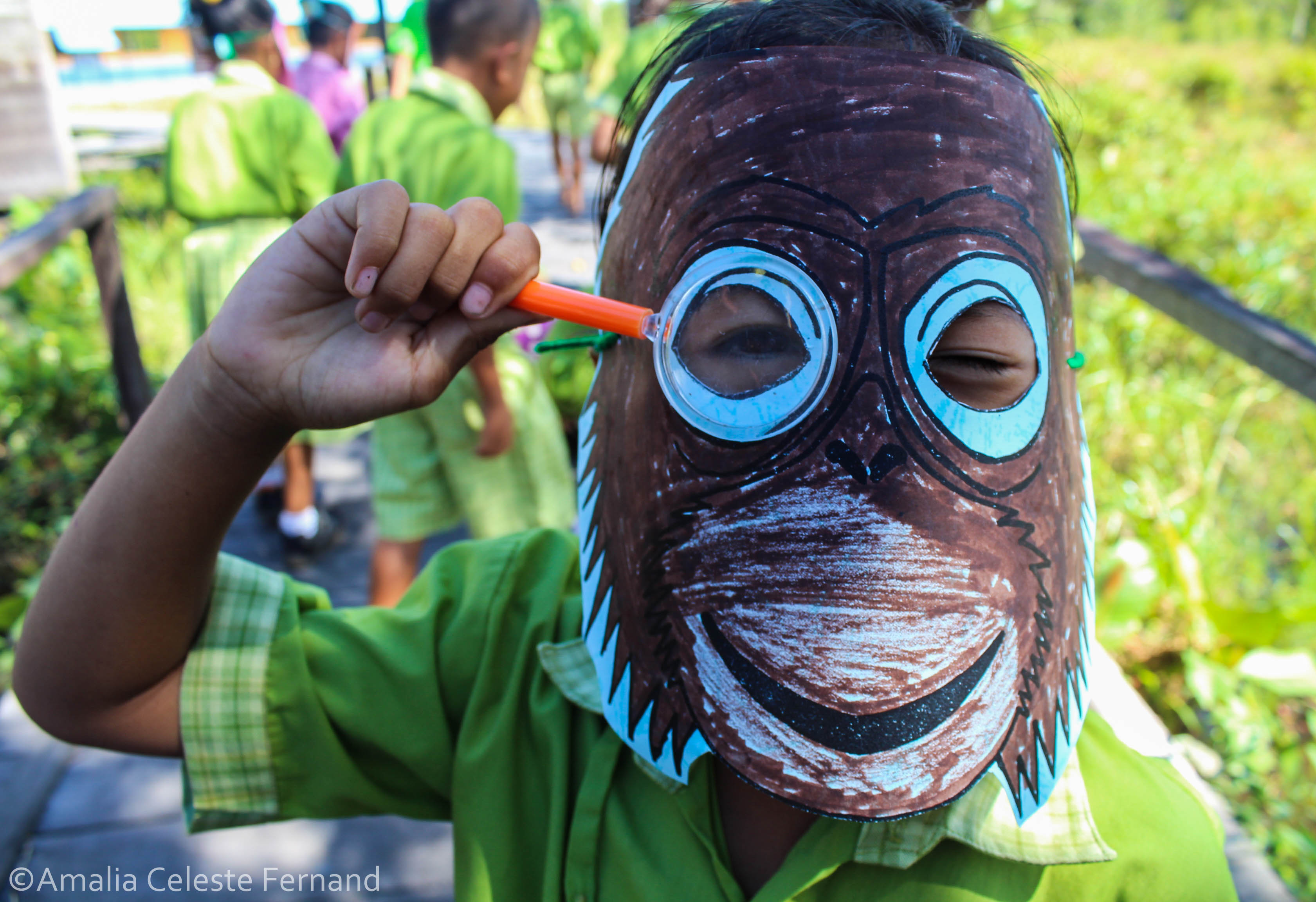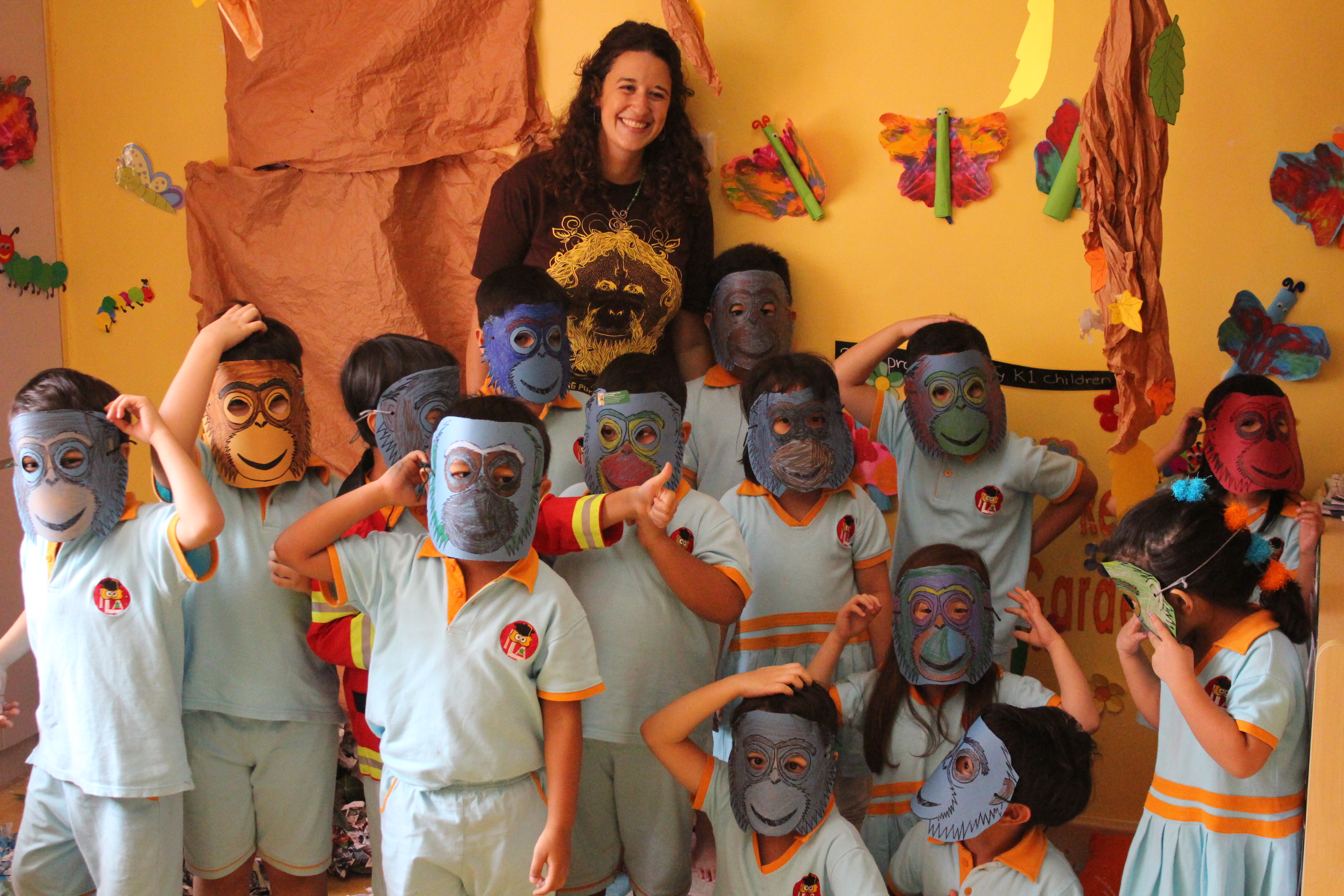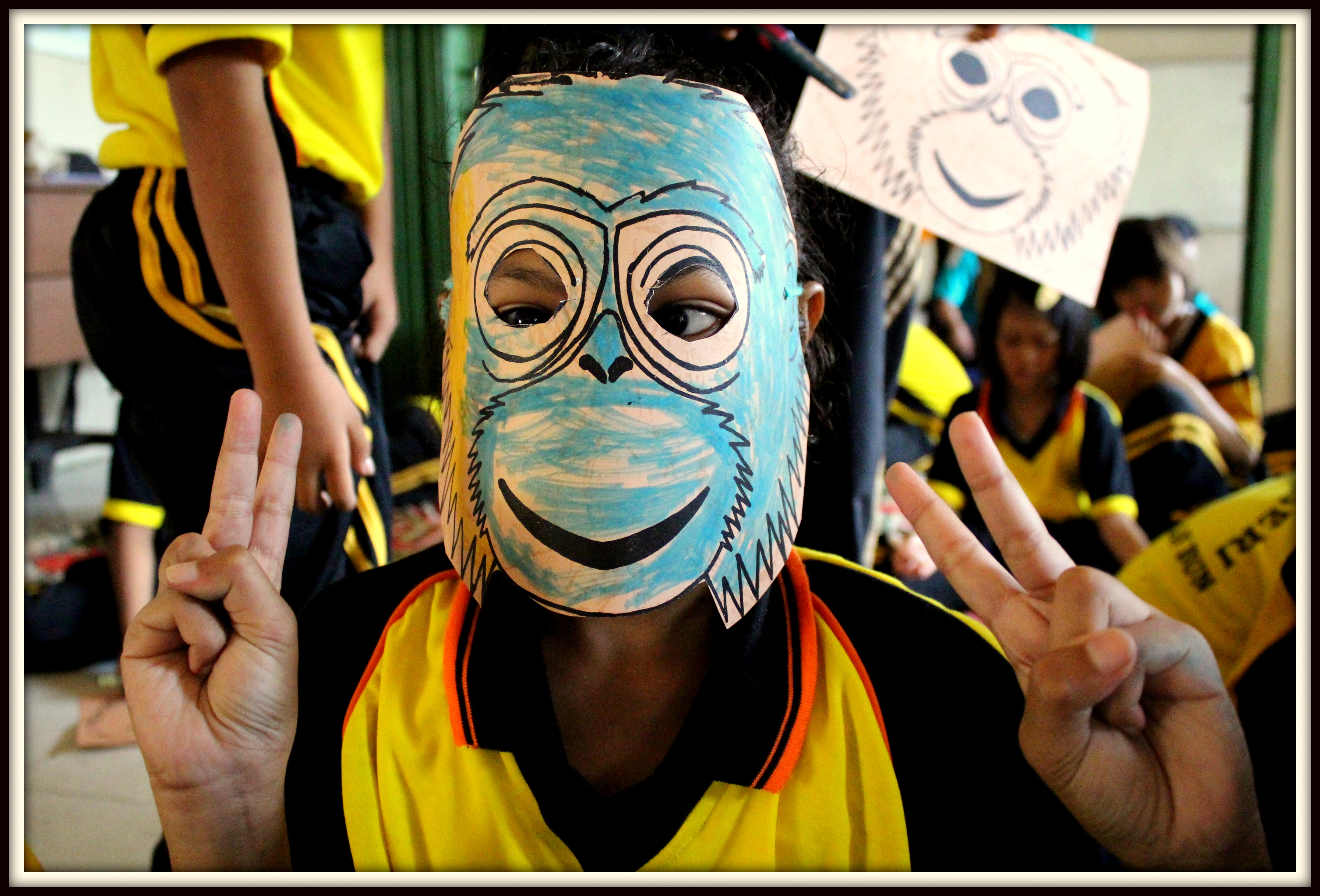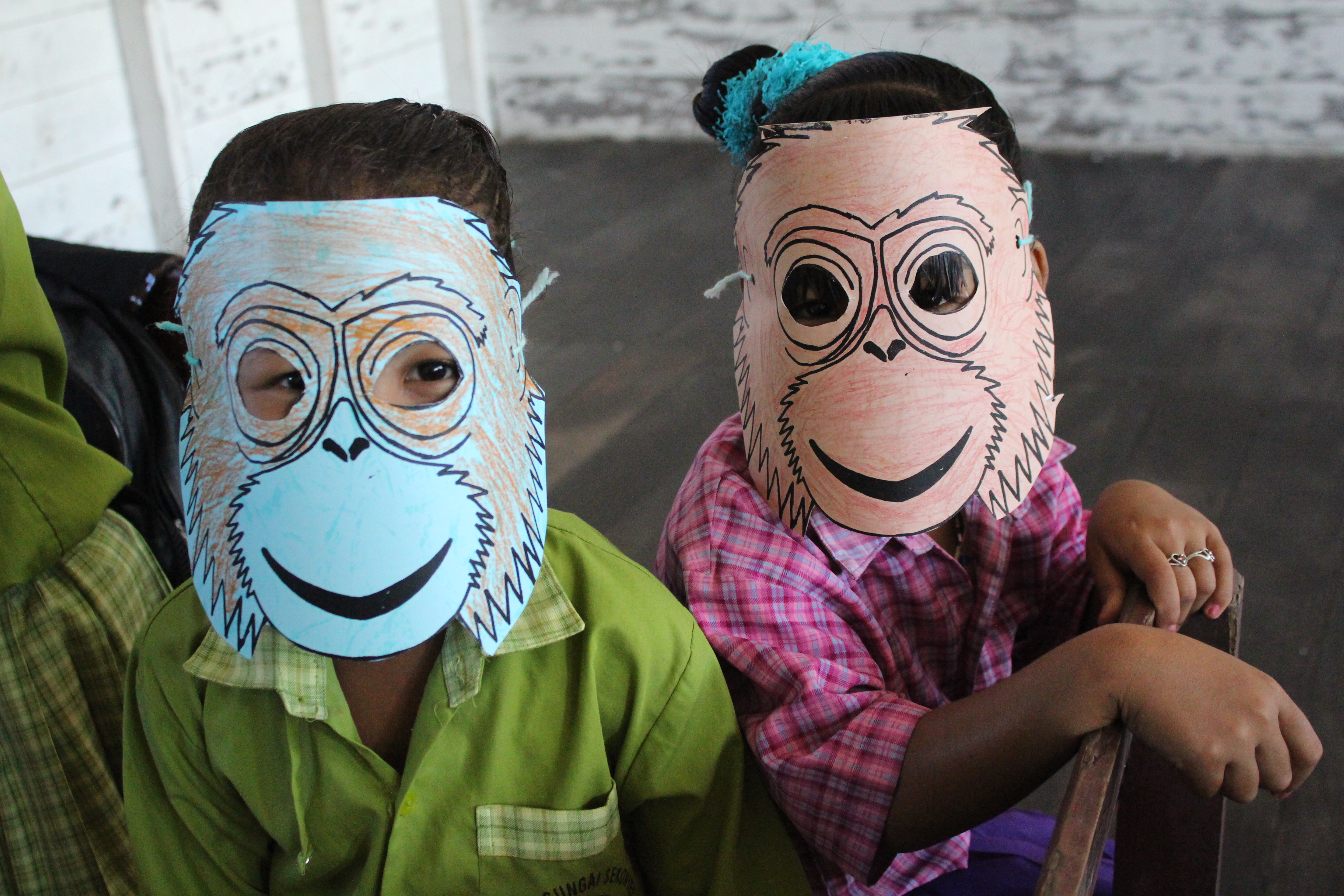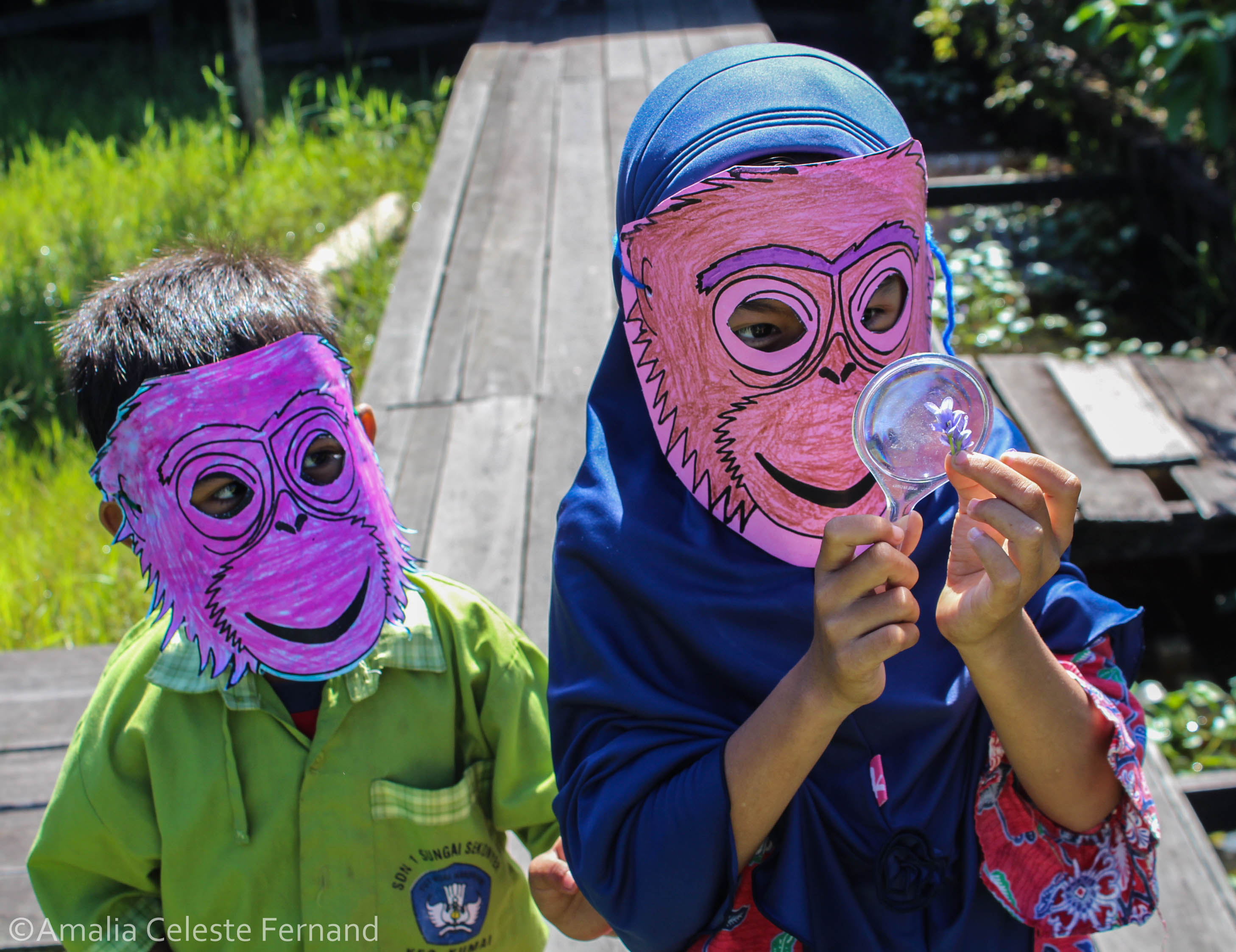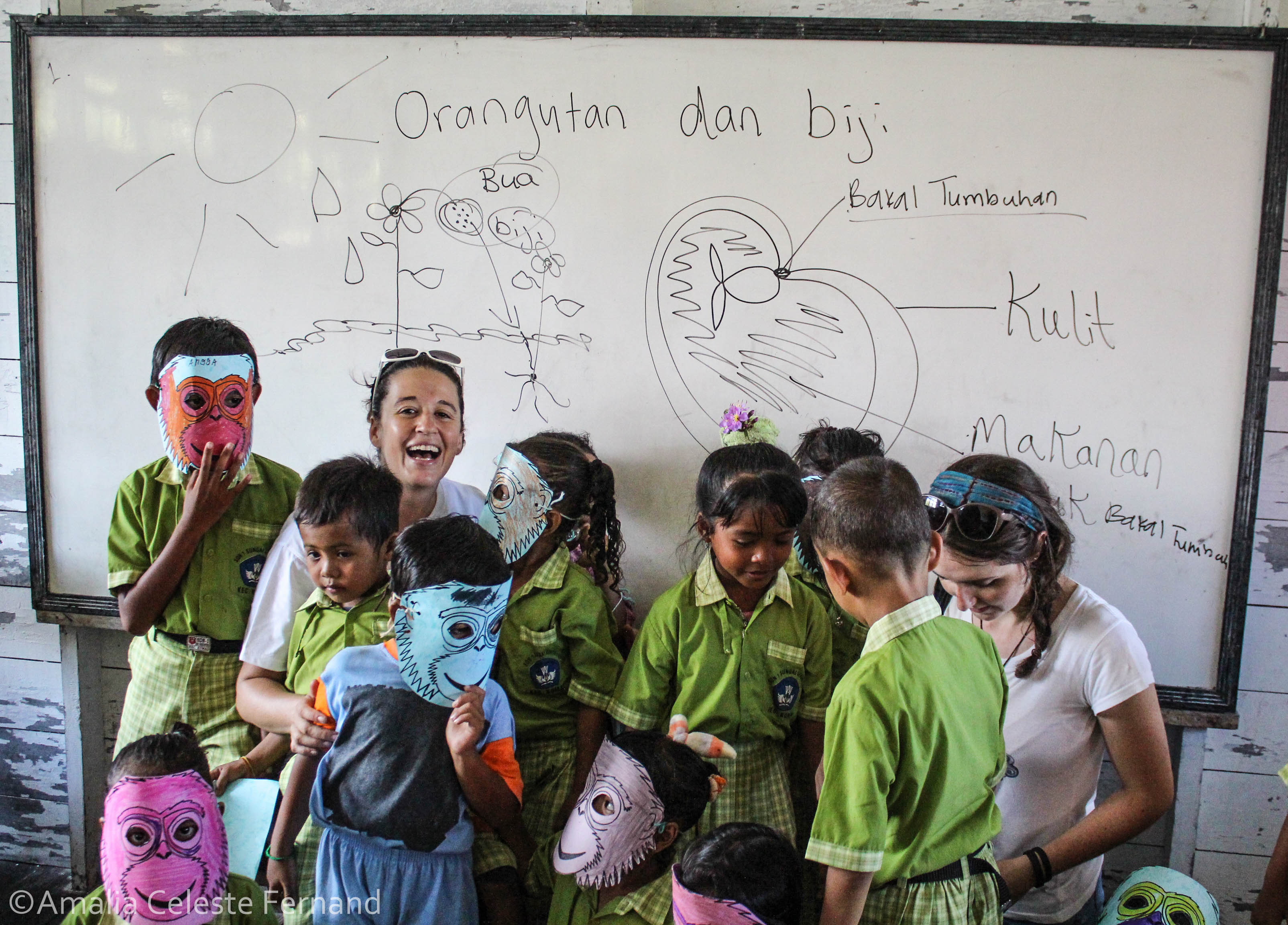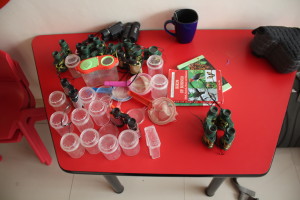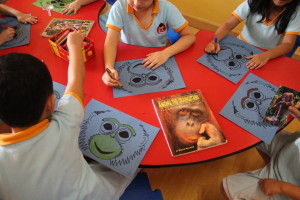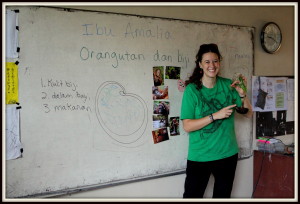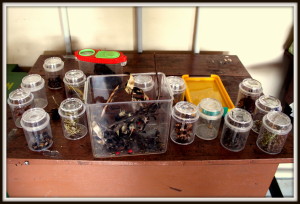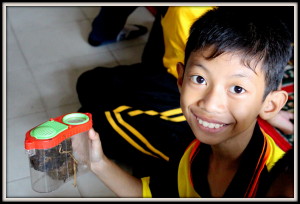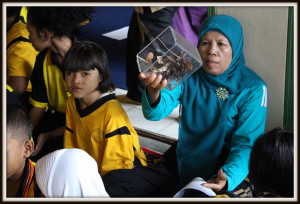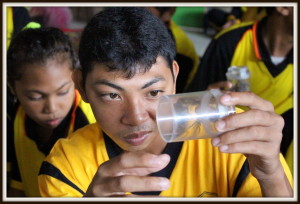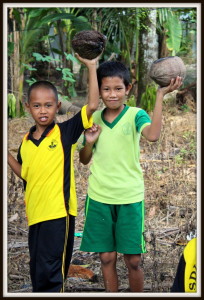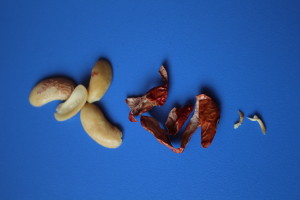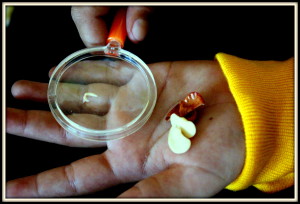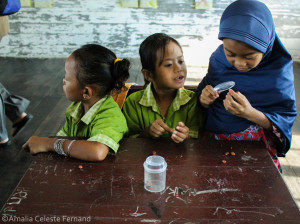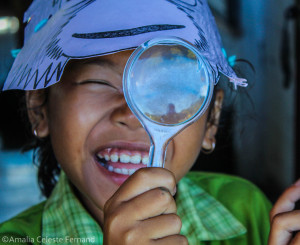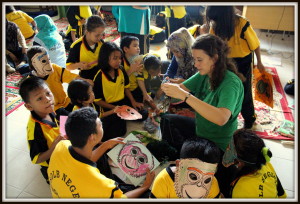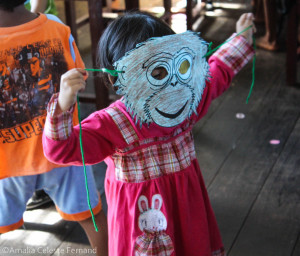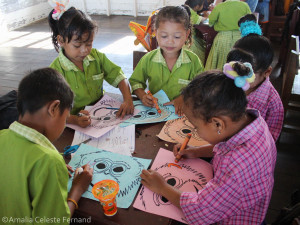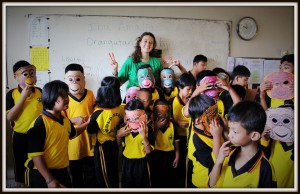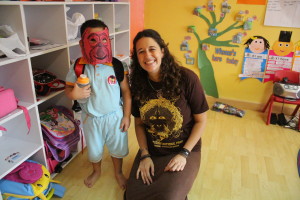Across Indonesia and Malaysia, I taught this lesson to hundreds of children during my year in Borneo.
Objective:
Summary: Students will learn how plants and orangutans are connected through an interactive lesson that includes a science experiment, an art project, and a game.
Concepts:
Parts of a seed, parts of a plant, what a plant needs to grow, seed dispersal, endangered animals, what animals need in their habitat, deforestation, orangutan conservation
Materials:
- Binoculars & magnifying glasses (optional)
- Collected examples of seeds and plants in various stages of growth
- Orangutan masks copied on cardstock
- Markers and/or crayons
- Hole punches
- Scissors
- Yarn
- Beans (softened by adding hot water for 5 min.)
- Seed diagram
- White board, chalk board, or large piece of paper.
- Markers or chalk to draw diagrams
Procedure:
The Parts of A Seed
- Pass examples of seeds around for the students to look at. Explain that there are many different kinds of seeds.
- Seeds look different, but they all have 3 main parts (draw diagram).
- The seed coat protects the seed from damage, weather, and animals.
- A baby plant, called an embryo, is inside every seed.
- The rest of the seed is called the endosperm. It is food for the baby plant.
What Does a Plant Need to Grow?
- There are five things that a plant needs to grow.
- Have children guess while drawing a diagram on the board, demonstrate actions for very young children.
- Water
- Sun
- Soil
- Nutrients
- Air
The Parts of a Plant
- After a seed has the five things that it needs to grow, which part of the plant grows first?
- The roots grow first to drink water and nutrients for the plant. They hold the plant upright in the ground.
- Next, the stem grows up towards the sunlight.
- Leaves grow from the stem to catch the sunlight.
- Flowers grow from some plants. Fruits grow from flowers.
- Every fruit has a seed inside of it.
- What is inside of a seed? A baby plant!
Dissect-a-Seed Science Experiment
- Explain to the students that they are going to take apart a seed to find the parts inside.
- Give a few softened beans to each student and demonstrate the dissection.
- First, take off the seed coat.
- Open up the seed to find the baby plant (embryo)! Use a magnifying glass to see it better.
- The rest of the seed is food for the baby plant (endosperm) to use before it can make it’s own food.
Nature Walk
- Seeds and plant parts are all around us. Have students take a little walk to see what parts of the plant they can find.
- Take along binoculars and magnifying glasses to help them look.
Orangutans Need Seeds and Seeds Need Orangutans
- What do orangutans eat?
- They eat many things, mostly: fruit, leaves, flowers, and insects.
- When they eat fruit, they drop the seeds in the forest. New fruit trees grow where the seeds are dropped.
- Orangutans help the forest by spreading seeds that grow into trees.
Make Orangutan Masks
- Tell students that they can pretend to be orangutans and help the forest too!
- Have students color and cut out the mask.
- Help them to cut out the eyes.
- Punch holes in the ears.
- Tie a piece of yarn to each side.
- Fit the mask around the child’s head and tie a bow in the back.
Orangutans Are Losing Their Habitat
- What is Habitat? There are 5 main things that every animal needs in their habitat.
- Food
- Water
- Shelter
- Space
- Air
Play “Oh Orangutan” (A modification of Project Wild’s “Oh Deer”)
- Half of the students will start out as orangutans and half will start out as habitat in two lines facing each other on a playing court.
- Students use their arms to make signs that represent food, water, shelter and space.
- Space is arms spread wide.
- Shelter is arms above the head with hands together.
- Food is one hand rubbing the belly.
- Water is one hand making a repeated cupped hand motion towards the mouth.
- Air is both hands repeatedly grabbing at the air.
- Each orangutan will decide what they need in their habitat for each round and make the appropriate sign.
- The habitat will decide what kind of habitat they will be and make the appropriate sign.
- When an adult says go, the orangutans look across to see if there is anyone with a matching sign on the habitat side.
- Orangutans run across, take the matching person gently by the hand, and return to the orangutan side (note: habitat does not run).
- If the orangutans do not find a match, they stay and become part of the habitat.
- The game continues for several rounds.
- Ask students to notice what happens when there are too many orangutans and not enough habitat.
Closure:
- Ask assessment questions:
- What do orangutans eat?
- What is inside of every fruit?
- What is inside of every seed?
- How do orangutans help the forest?
Take-home:
- Remind the children that when someone asks them about their mask, they can teach them all about how orangutans help forests.
- Encourage students to act out pretending to be an orangutan eating fruit and dropping seeds.
- Have the children complete and label a seed diagram worksheet.
- Take home an orangutan coloring sheet for continued reinforcement of concepts.
Please let me know how this lesson works for you. What modifications or suggestions do you have? I would love to see your orangutan mask pictures!

